Issue Archive
Table of Contents
EDITORIAL
Introduction to a How I Treat series on managing complications in patients with lymphoid cancer
Edited by Associate Editor Laurie Sehn, this How I Treat series features 5 state-of-the-art advisory pieces on how experts tackle recurring medical problems that may arise in the context of successful treatment for patients with lymphoid malignancies. Using case-based scenarios, the authors lay out recommendations for diagnosis, prevention, and treatment, providing clinicians with practical advice on how to optimize care for these patients, including through prevention.
BLOOD COMMENTARIES
PLENARY PAPERS
Effectiveness of the BNT162b2mRNA COVID-19 vaccine in patients with hematological neoplasms in a nationwide mass vaccination setting
Clinical Trials & Observations
In a Plenary Paper, Mittelman and colleagues assess the relative clinical efficacy of mRNA vaccination on COVID-19 disease incidence and outcomes in patients with hematologic malignancies compared with healthy matched controls. This population-based study from Israel links prior observations of poor serologic responses to vaccination to higher risk for breakthrough infection, hospitalization, and death in patients with blood cancer, especially those on active antineoplastic therapy. In an accompanying Letter to Blood, Pagano et al provide supportive data using a multination survey approach to capture outcomes for COVID-19 in vaccinated patients with hematologic neoplasms. They also emphasize the higher risk among patients with lymphoid malignancies. Together, these findings argue for both continued deployment of booster programs and ongoing public health guidance for this vulnerable group.
HLA informs risk predictions after haploidentical stem cell transplantation with posttransplantation cyclophosphamide
Hematopoietic stem cell transplantation from relatives sharing only 1 haplotype is revolutionizing curative approaches to patients with poor-prognosis acute leukemias. This Plenary Paper by Fuchs et al addresses the clinically relevant issue of the role of donor-recipient HLA matching on the unshared haplotype. They demonstrate that the specifics of single-locus mismatches matter with respect to risk of relapse and survival, with immediate implications for optimizing donor selection. The authors offer a Web-based tool to enable transplant physicians to make use of these findings.
HOW I TREAT SERIES
How I treat neurologic complications in patients with lymphoid cancer
Edited by Associate Editor Laurie Sehn, this How I Treat series features 5 state-of-the-art advisory pieces on how experts tackle recurring medical problems that may arise in the context of successful treatment for patients with lymphoid malignancies. Using case-based scenarios, the authors lay out recommendations for diagnosis, prevention, and treatment, providing clinicians with practical advice on how to optimize care for these patients, including through prevention.
How I manage autoimmune cytopenias in patients with lymphoid cancer
Edited by Associate Editor Laurie Sehn, this How I Treat series features 5 state-of-the-art advisory pieces on how experts tackle recurring medical problems that may arise in the context of successful treatment for patients with lymphoid malignancies. Using case-based scenarios, the authors lay out recommendations for diagnosis, prevention, and treatment, providing clinicians with practical advice on how to optimize care for these patients, including through prevention.
How I treat and prevent venous thrombotic complications in patients with lymphoma
Edited by Associate Editor Laurie Sehn, this How I Treat series features 5 state-of-the-art advisory pieces on how experts tackle recurring medical problems that may arise in the context of successful treatment for patients with lymphoid malignancies. Using case-based scenarios, the authors lay out recommendations for diagnosis, prevention, and treatment, providing clinicians with practical advice on how to optimize care for these patients, including through prevention.
How I treat cardiovascular complications in patients with lymphoid malignancies
Edited by Associate Editor Laurie Sehn, this How I Treat series features 5 state-of-the-art advisory pieces on how experts tackle recurring medical problems that may arise in the context of successful treatment for patients with lymphoid malignancies. Using case-based scenarios, the authors lay out recommendations for diagnosis, prevention, and treatment, providing clinicians with practical advice on how to optimize care for these patients, including through prevention.
How I manage infection risk and prevention in patients with lymphoid cancer
Edited by Associate Editor Laurie Sehn, this How I Treat series features 5 state-of-the-art advisory pieces on how experts tackle recurring medical problems that may arise in the context of successful treatment for patients with lymphoid malignancies. Using case-based scenarios, the authors lay out recommendations for diagnosis, prevention, and treatment, providing clinicians with practical advice on how to optimize care for these patients, including through prevention.
HEMATOPOIESIS AND STEM CELLS
Endothelial cell-derived angiopoietin-like protein 2 supports hematopoietic stem cell activities in bone marrow niches
The specifics of how bone marrow niche cells regulate hematopoietic stem cell (HSC) function and population dynamics require further elucidation. Yu and colleagues provide a mechanistic understanding of how the secreted molecule angiopoietin-like protein 2 (ANGPTL2), specifically that derived from endothelial cells, is important for maintenance of HSC repopulation capacity, quiescence, and localization in the vascular niche.
LYMPHOID NEOPLASIA
Genome-wide CRISPR screen identifies CDK6 as a therapeutic target in adult T-cell leukemia/lymphoma
Using whole-genome CRISPR library screening, Ishio et al identified the genes critical for proliferation and survival of adult T-cell leukemia/lymphoma (ATL) cells. Their data are consistent with the notion that the causative virus, human T-lymphotropic virus 1, targets regulatory T cells for its survival by modulating specific gene networks and that these networks remain indispensable for ATL cells. This research spotlights and preclinically tests potential therapeutic targets for this intractable disease, particularly cyclin-dependent kinase 6 (CDK6) and the mTORC1 pathway.
High-risk subtypes of chronic lymphocytic leukemia are detectable as early as 16 years prior to diagnosis
Brief Report
Kolijn and colleagues provide insights into the earliest phases of emergence of a B-cell clone destined to become monocloncal B-cell lymphocytosis (MBL) and later chronic lymphocytic leukemia (CLL). Through analyses of the B-cell receptor immunoglobulin heavy-chain gene repertoire in serial blood samples collected in a longitudinal study of healthy recruits, they identify clonal skewing up to 16 years before diagnosis of CLL, including in patients later diagnosed with unfavorable-risk disease. While this study extends our insight into the disease's natural history, it has no prognostic impact or implications for clinical assessment.
PLATELETS AND THROMBOPOIESIS
SARS-CoV-2 vaccination and ITP in patients with de novo or preexisting ITP
Clinical Trials & Observations
THROMBOSIS AND HEMOSTASIS
Robust thrombolytic and anti-inflammatory action of a constitutively active ADAMTS13 variant in murine stroke models
ADAMTS13 is a plasma metalloprotease that targets the vascular adhesive glycoprotein von Willebrand factor and is a natural antithrombotic. South et al describe their research to develop ADAMTS13-based products as thrombolytics. They describe the design, construction, and in vitro testing of constitutively active ADAMTS13 mutants, as well as in vivo testing of a lead molecule in models of murine ischemic stroke, with data suggesting a beneficial effect.
LETTERS TO BLOOD
COVID-19 in vaccinated adult patients with hematological malignancies: preliminary results from EPICOVIDEHA
Clinical Trials & Observations
In a Plenary Paper, Mittelman and colleagues assess the relative clinical efficacy of mRNA vaccination on COVID-19 disease incidence and outcomes in patients with hematologic malignancies compared with healthy matched controls. This population-based study from Israel links prior observations of poor serologic responses to vaccination to higher risk for breakthrough infection, hospitalization, and death in patients with blood cancer, especially those on active antineoplastic therapy. In an accompanying Letter to Blood, Pagano et al provide supportive data using a multination survey approach to capture outcomes for COVID-19 in vaccinated patients with hematologic neoplasms. They also emphasize the higher risk among patients with lymphoid malignancies. Together, these findings argue for both continued deployment of booster programs and ongoing public health guidance for this vulnerable group.
Clonal hematopoiesis is associated with improved survival in patients with metastatic colorectal cancer from the FIRE-3 trial
Clinical Trials & Observations
BLOOD WORK
ERRATA
-
Cover Image
Cover Image
![issue cover]()
Immunofluorescence staining of long-term hematopoietic stem cell (LT-HSC; red) localization in the bone marrow(BM) niche from a Cdh5-Cre;Angptl2fl/fl mouse. ANGPTL2 deletion in endothelial cells disrupts the BM niche, leading to distancing of the LT-HSC from laminin-positive endothelial cells (green). See the article by Yu et al on page 1529.
- PDF Icon Front MatterFront Matter
- PDF Icon Table of ContentsTable of Contents
- PDF Icon Editorial BoardEditorial Board
Advertisement intended for health care professionals
Email alerts
Advertisement intended for health care professionals


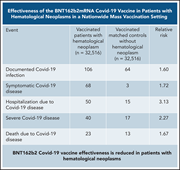
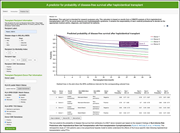

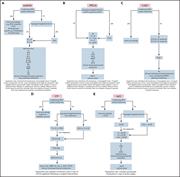
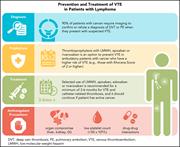
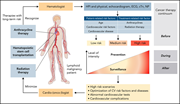


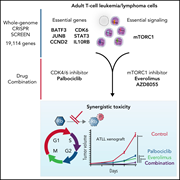

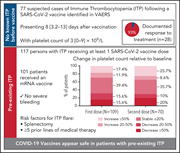


Danger ahead: COVID-19 infections after vaccination
Clinical Trials & Observations